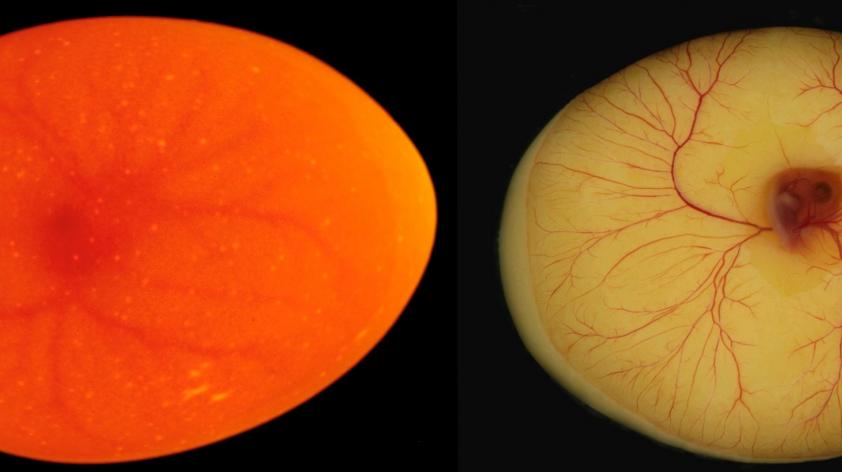
Seeing eggs in a whole new light
Scrambled, poached, or fried? That’s what came to mind when we thought about eggs—before we joined the team of Dr. Tom Jensen in Reproductive Sciences. Immediately after our initiation, we realized that there was more to this innocuous looking object that all of us take for granted each morning at the breakfast table. We were ready to learn more! So, when my lab partner and I were told that we would participate in the annual San Diego Zoo Institute for Conservation Research Avian Incubation Workshop, we thought, what better way to fulfill our quest for knowledge? And the workshop did not disappoint.
During the five-day event, we were exposed to the extraordinary environment in which a developing chicken grows inside the egg, while also having the opportunity to see real-time, behind-the-scenes avian care. Each day was a medley of lectures, hands-on experience, and tours of different facilities, so it certainly kept our attention. The most exciting part of the workshop was the hands-on experience.
Some of the great things we did included using a light to see the size of the chick inside the egg (called “candling”), sexing the chick while still in the egg, and, of course, ending the workshop by cracking open the stinky rotten eggs that were sometimes months old, to try to evaluate what went wrong in their development.
One of the most important elements of egg incubation is monitoring the health and wellbeing of the chick while it is developing inside the egg. To do this, keepers hold the egg up to a strong flash light and gently roll it from side to side; this is called candling the egg. You candle an egg to check for characteristics that are specific to the age of the growing chick. It was really exhilarating to identify the developmental milestones displayed on the big TV screens in the lab and in the beautifully made color manual. There was a certain level of achievement when we identified the particular developmental milestone associated with specific embryonic stages.
One of the most interesting developmental milestones was the formation of the egg tooth. When the chick is ready to hatch, it pushes out through the eggshell using its little egg tooth, perched on top of its beak. When candling at the beginning of hatch, you can see the chick’s beak peeping through the air cell of the egg, this is known as the “internal pip.” There are many stages of growth that can be seen through candling alone, and this allows us to know that our little chick is as healthy as possible.
Another great part of the workshop was having the opportunity to visit the bird facilities of the San Diego Zoo, San Diego Zoo Safari Park, and Sea World San Diego. Meeting the keepers that care for the California condors was a personal favorite, but having the opportunity to meet the emperor, Adélie, gentoo and macaroni penguins up close was an opportunity that few receive, and for which we were all so grateful.
Being ushered through the enclosures, while the keepers shared wonderful stories of the different species was thrilling. We never imagined the detail that goes into creating the ideal, customized habitat for each and every one of our birds. We also visited the incubation and hatching facilities where the chicks are hatched and cared for. The experience was humbling when considering the level of dedication and passion that each
caregiver showed for these birds. It is wonderful to know that we have such capable people taking care of our very special avian friends here in San Diego.













